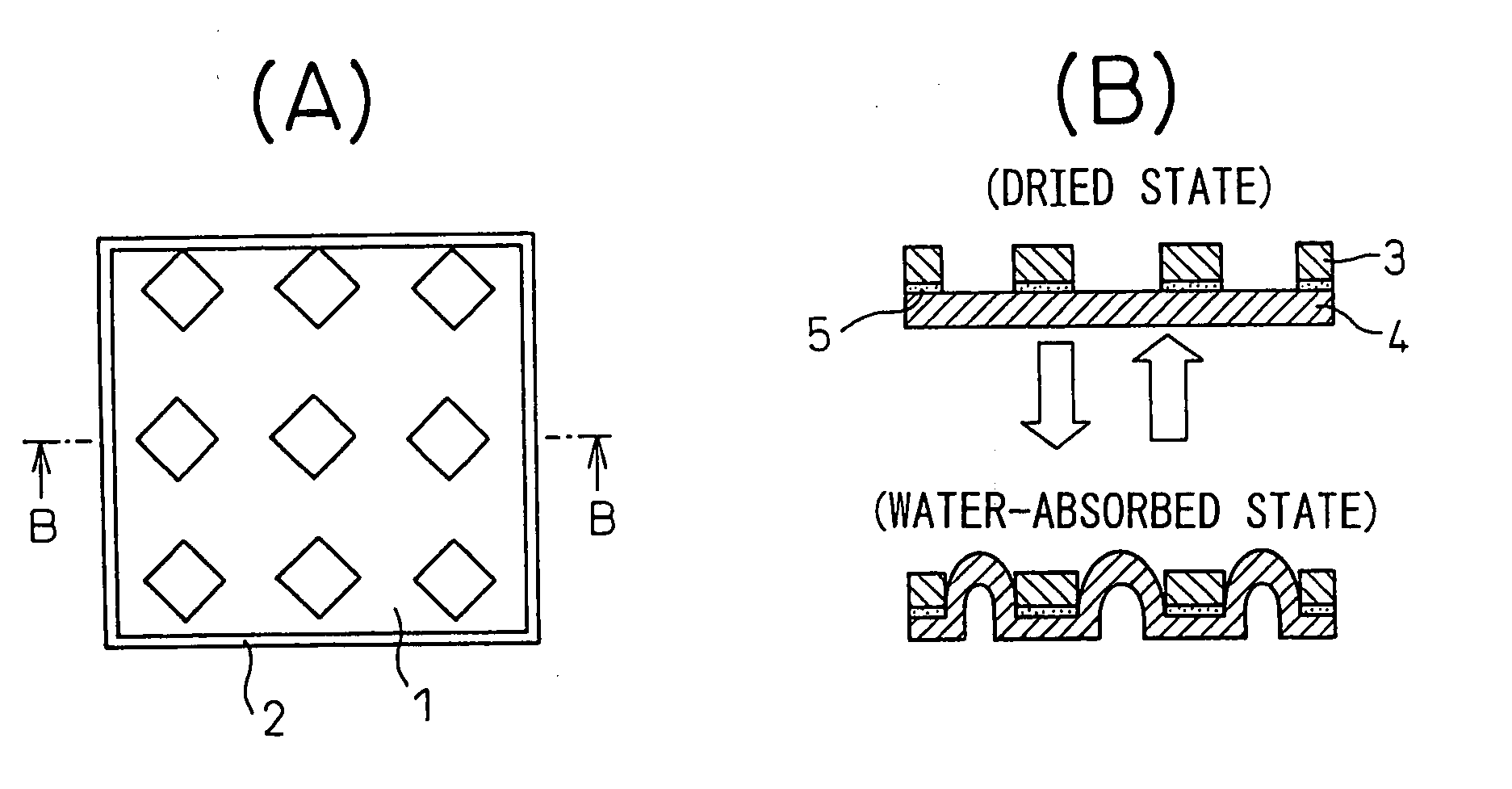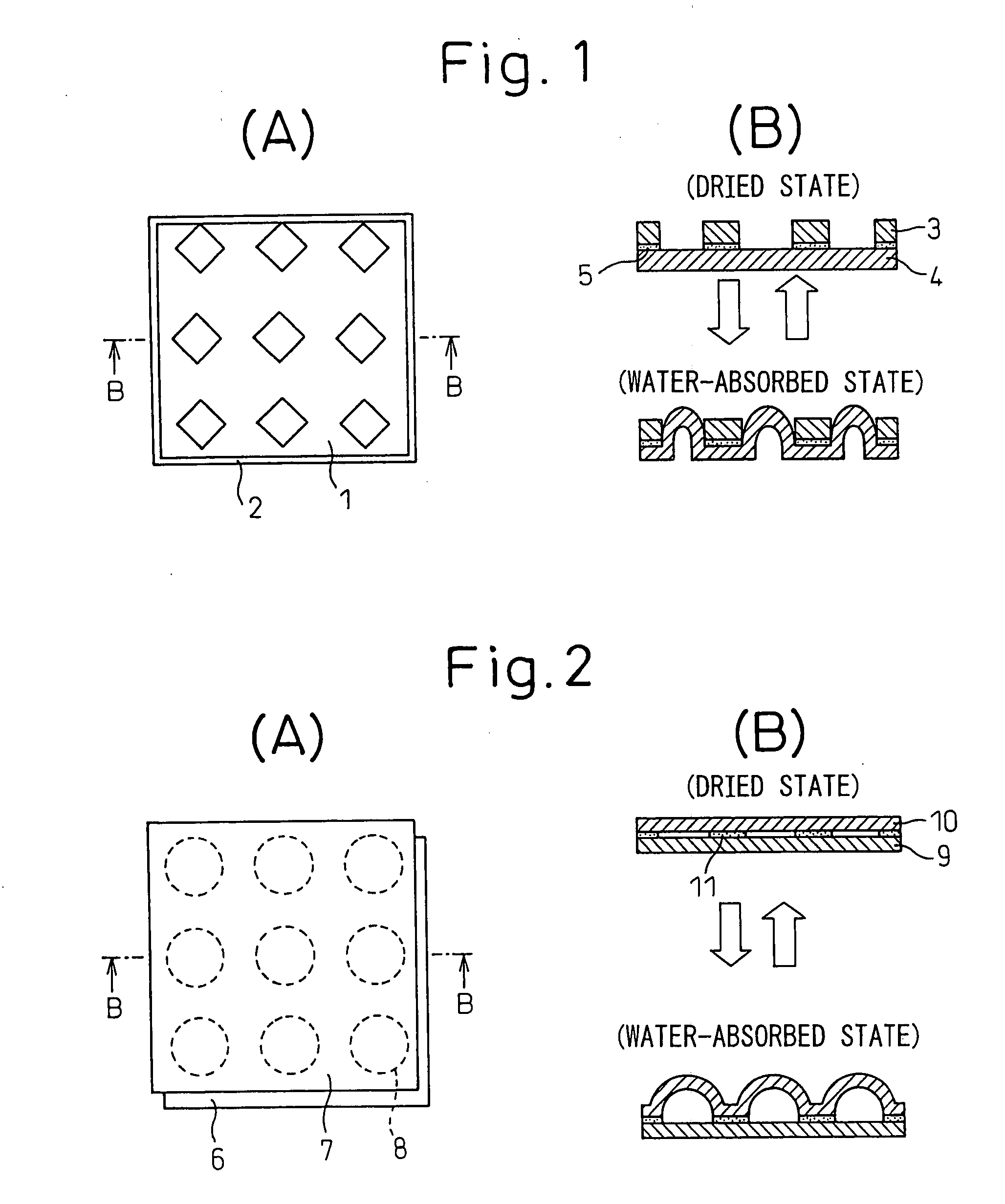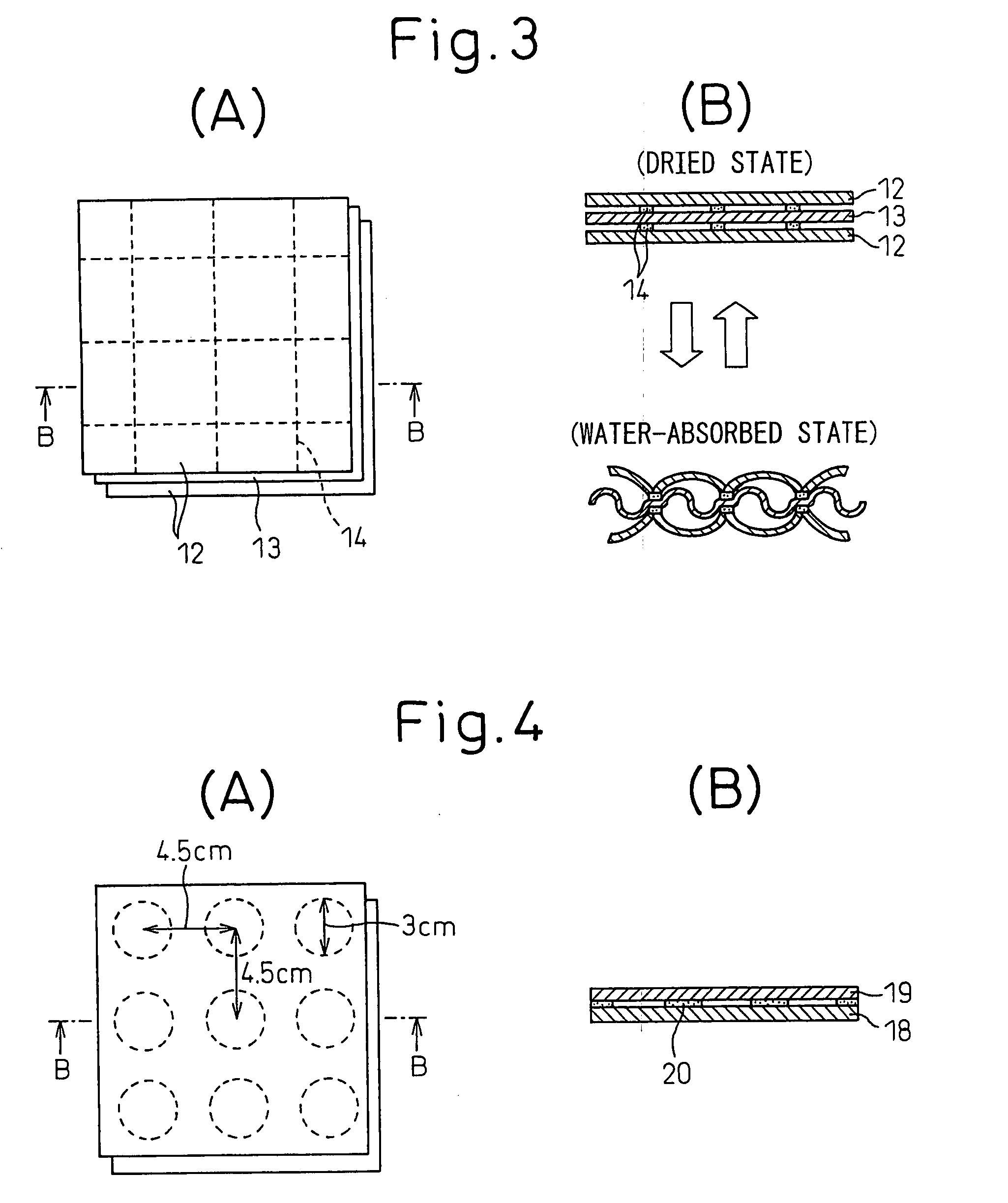Composite Fabric Material Exhibiting Three-Dimensional Structural Change Upon Water Absorption, and Textile Products
a composite fabric and water absorption technology, applied in the field of composite fabric materials, can solve the problems of textile products made from such fabrics that undergo a three-dimensional structural change upon water absorption, and have not been proposed to date, so as to improve air permeability, reduce stickiness, mustiness and coldness, and increase thickness
- Summary
- Abstract
- Description
- Claims
- Application Information
AI Technical Summary
Benefits of technology
Problems solved by technology
Method used
Image
Examples
example 1
[0128]A polyetherester comprising a hard segment of polybutylene terephthalate (49.8 parts by weight) and a soft segment of polyoxyethylene glycol with a number-average molecular weight of 4000 (50.2 parts by weight) was melted at 230° C. and extruded through a prescribed spinning nozzle at a discharge rate of 3.05 g / min. The polymer was taken up between two godet rollers at 705 m / min and then wound up at 750 m / min (wind-up draft: 1.06), to obtain a 44 dtex / filament elastic yarn having high water-absorbing and self-elongating properties. The swelling rate of the wetted water-absorbing and self-elongating yarn in the fiber axis direction was 10%, and the boiling water shrinkage was 8%.
[0129]As yarn having low water-absorbing and self-elongating properties there was also prepared an ordinary polyethylene terephthalate multifilament yarn (84 dtex / 24 filament) having a boiling water shrinkage of 10% and a wetted swelling rate of no greater than 1%.
[0130]Next, a 28 gauge single circular ...
example 2
[0137]A polyester multifilament yarn (22 dtex / 1 filament) was full-set on the back reed in a 36 gauge tricot knitting machine, while the same yarn as on the back reed was full-set on the front reed, for knitting of a knitted fabric with a double Denbigh knit texture of back: 10-12, front: 12-10, with knitting conditions of 100 courses / inch on the machine. The knitted fabric was then subjected to an ordinary dye finishing procedure. The dimensional change between the dry and wet states of the knitted fabric was 0.0% warp, 0.0% weft and no greater than 0.1% thickness change, and therefore the fabric was used as the area change-restricting means. The Jersey stitch fabric used as the water-absorbing fabric in Example 1 was also used as the water-absorbing fabric in this example.
[0138]Next, the area change-restricting means 18 and water-absorbing fabric 19 were bonded with an adhesive 20, also forming bilayer non-bonded circular sections with a diameter of 3 cm and center distances of 4....
example 3
[0140]The water-absorbing fabric and area change-restricting means used in Example 2 were used to form a trilayer structure with the water-absorbing fabric 22,25 as the interlayer between area change-restricting means 21,24 on the front and back, the three layers being bonded with an adhesive 26 in a 2 cm square lattice pattern with 3 mm lattice width (see FIG. 5).
[0141]The evaluation results for the obtained trilayer structure are shown in Table 1 and show that water absorption caused the trilayer non-bonded sections to rise three-dimensionally (the sections within the lattice), resulting in 120% change in thickness and 50% improvement in air permeability, and therefore the composite fabric material had undergone a satisfactory three-dimensional change in structure upon water absorption as intended for the present invention.
PUM
| Property | Measurement | Unit |
|---|---|---|
| temperature | aaaaa | aaaaa |
| elongation at break | aaaaa | aaaaa |
| thickness | aaaaa | aaaaa |
Abstract
Description
Claims
Application Information
 Login to View More
Login to View More - R&D
- Intellectual Property
- Life Sciences
- Materials
- Tech Scout
- Unparalleled Data Quality
- Higher Quality Content
- 60% Fewer Hallucinations
Browse by: Latest US Patents, China's latest patents, Technical Efficacy Thesaurus, Application Domain, Technology Topic, Popular Technical Reports.
© 2025 PatSnap. All rights reserved.Legal|Privacy policy|Modern Slavery Act Transparency Statement|Sitemap|About US| Contact US: help@patsnap.com



